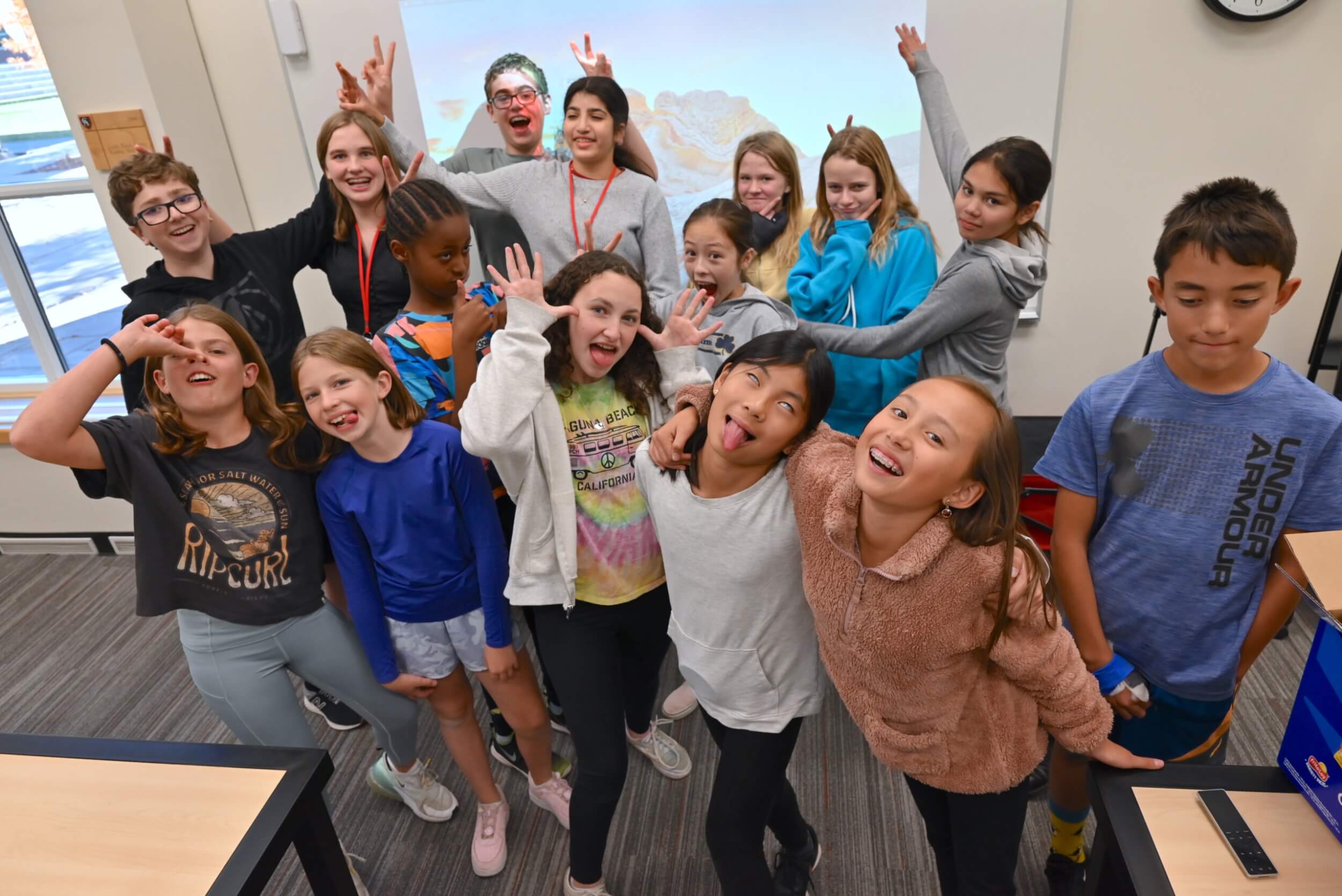There are many reasons Colorado Academy Middle and Upper School students sign up for the CA NaNoWriMo (National Novel Writing Month) club each November. Some do it for the sense of community, some want to improve their skills, and some will admit that, yes, they’re also there for the cookies and hot chocolate.
Still, there are a couple of things they all have in common: a love of words, and a passion for stories.
NaNoWriMo began in 1999 as a daunting but straightforward global challenge: to write 50,000 words of a novel in 30 days. Each year on November 1, hundreds of thousands of people around the world begin to write, determined to end the month with a brand new novel. Throughout its history, NaNoWriMo has been associated with numerous published authors, including Sara Gruen (Water for Elephants), Erin Morgenstern (The Night Circus), Rainbow Rowell (Fangirl), and Marissa Meyer (Cinder).
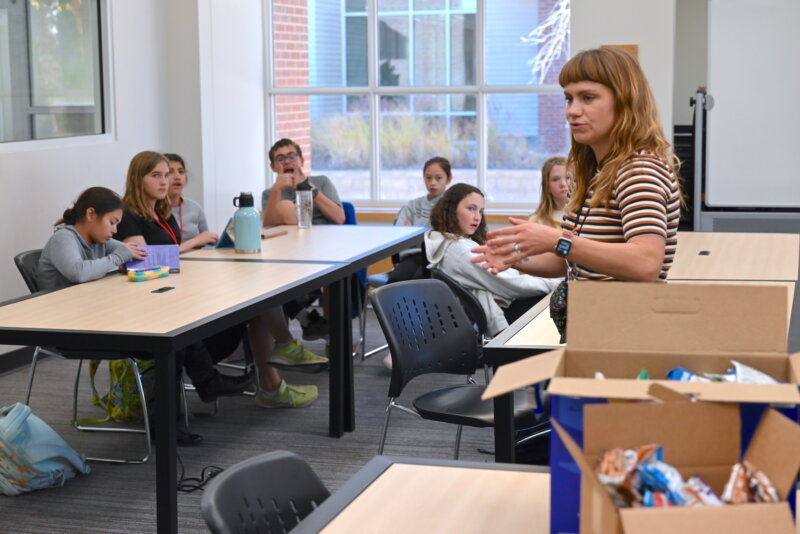
CA’s Library team has encouraged young writers to participate in NaNoWriMo over at least the last eight years, allowing scores of students to tap into creativity, confidence, and self-expression through writing. Since 2019, Raether Library Assistant and Middle School ceramics teacher Becci Marzonie has played the role of chief NaNoWriMo evangelist at CA, helping students discover story ideas, make progress on their writing, and celebrate their achievements.
Over the years, a handful of CA writers have made it to the challenge’s 50,000-word goal. But, says Marzonie, for Middle and Upper School students, word count is just one of many ways to measure success in the annual initiative.
“I tell them it’s challenge by choice,” Marzonie explains. “If you want to reach 50,000 words, that’s great. If you just want to write with your friends and come up with cool ideas, that’s awesome, too. I’m probably a little more lenient than others who organize NaNoWriMo groups. For me, it’s really about giving students unstructured, creative time, without the constraints and concerns they usually encounter during the rest of their academic lives.”
Ideas in the wild
The Middle School and Upper School NaNoWriMo groups meet separately each week during November in Raether Library’s North Classroom, a quiet and comfortable space where students can type on their iPads, chat with a writing partner, choose from an assortment of snacks and drinks, and record their progress on an official NaNoWriMo “leaderboard.”
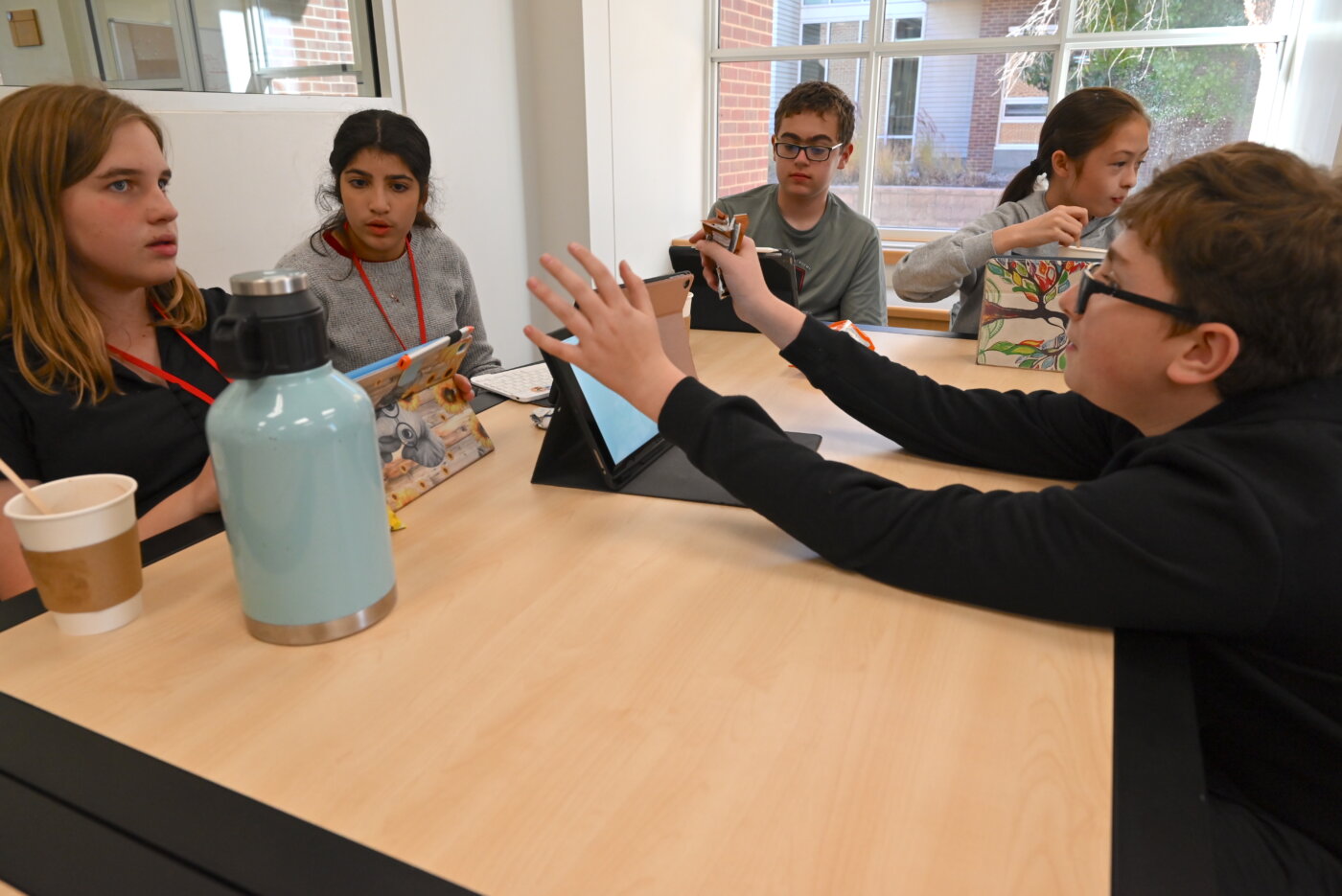
This year’s participants are pursuing a wide variety of novel ideas, from a dystopian sci-fi romance to a work of historical fiction told from the perspective of a rabbit.
Junior Bela Chaudhuri is continuing with a horror story concept she started last year in the club. “It’s about a street which families visit year after year—sort of a tradition, but everything goes wrong. It’s very, very fun.”
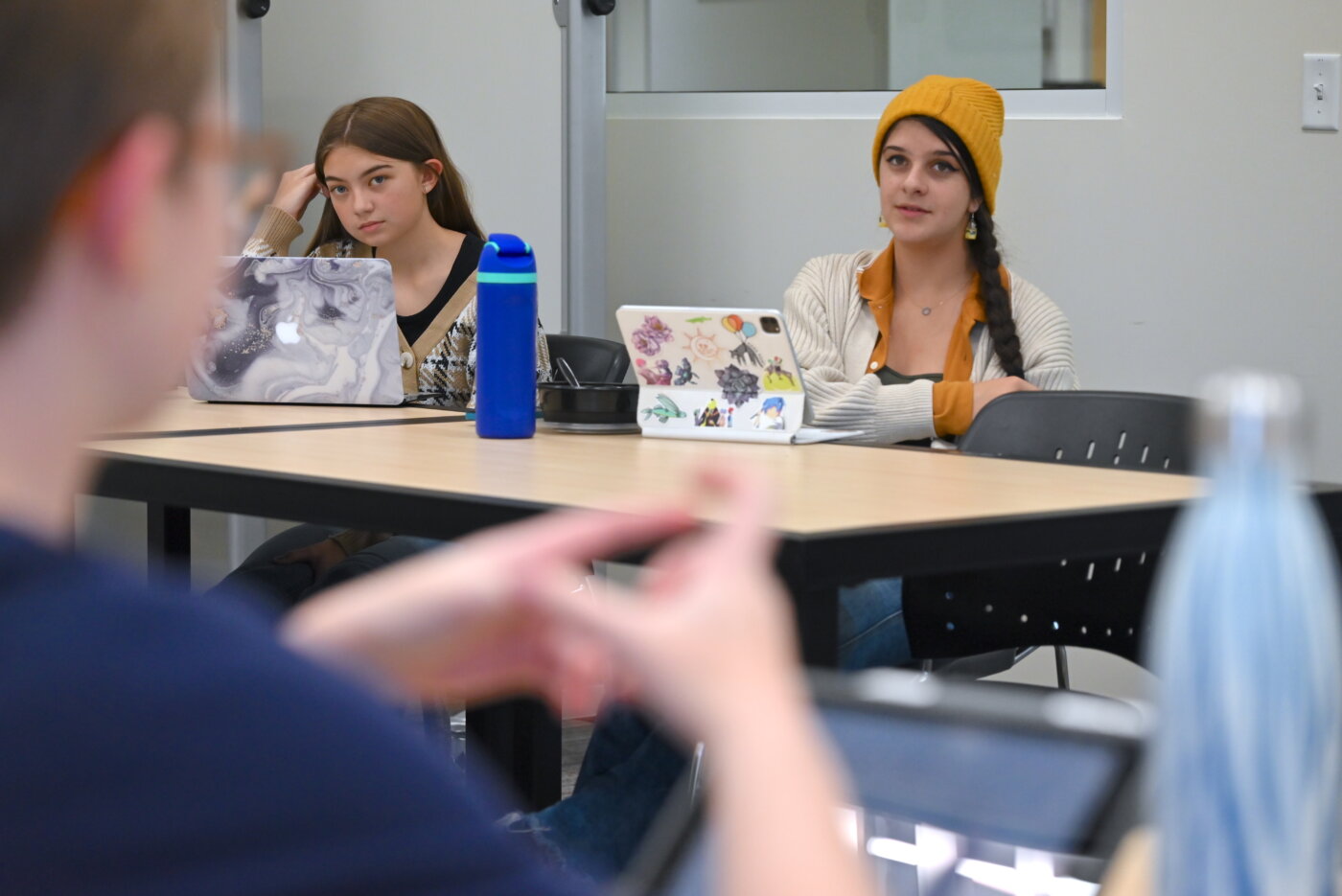
“I love the NaNoWriMo community,” she continues. “It’s always so much fun to talk about your ideas, and to see other people’s work expand and become tangible, while yours is also coming to life, too.”
According to Sixth Grader Keelan Yi, “I don’t know what I’m going to write about yet, but I know I want to work on my writing skills, so I can be more descriptive.”
Senior Anna Jordaan, who is working on a fictionalized version of her own life, is there for much the same reason. “I haven’t had much experience with creative writing, so this is a fun way to get better at that. And just being able to write about whatever you want is a great release from the stress of the school day.”

A trio of Ninth Graders new to NaNoWriMo are taking advantage of the club to explore ideas that interest them. Maris McPheeters is curious about what happens when a student who is expelled from school tries to return. Her friend, Ailee Doniger, is writing about a girl who figures out she’s not human, and another friend, Georgia Gutsch, is working on the concept of an assassin who falls in love and tries to escape the trap of her career.
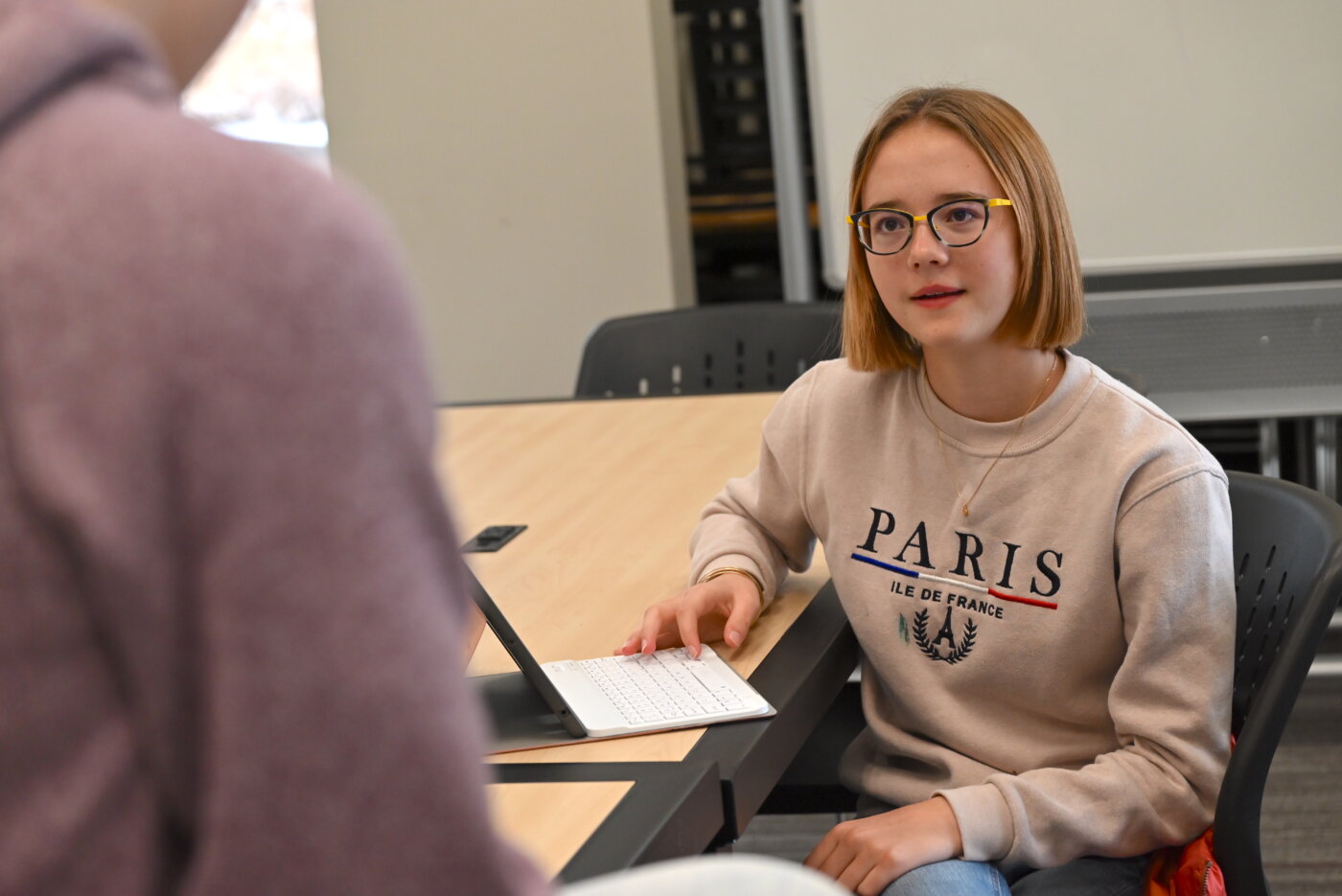
“It’s a nice way to decompress with everything else that’s going on for us as high schoolers,” Gutsch says.
Kit Freeman, another Ninth Grader, is a three-year veteran of NaNoWriMo, who previously reached 50,000 words when they participated as a Middle Schooler. Admitting that they spend an “obsessive” amount of time daydreaming about writing, they say, “This gets me to actually do stuff and write and get myself to my goal.”
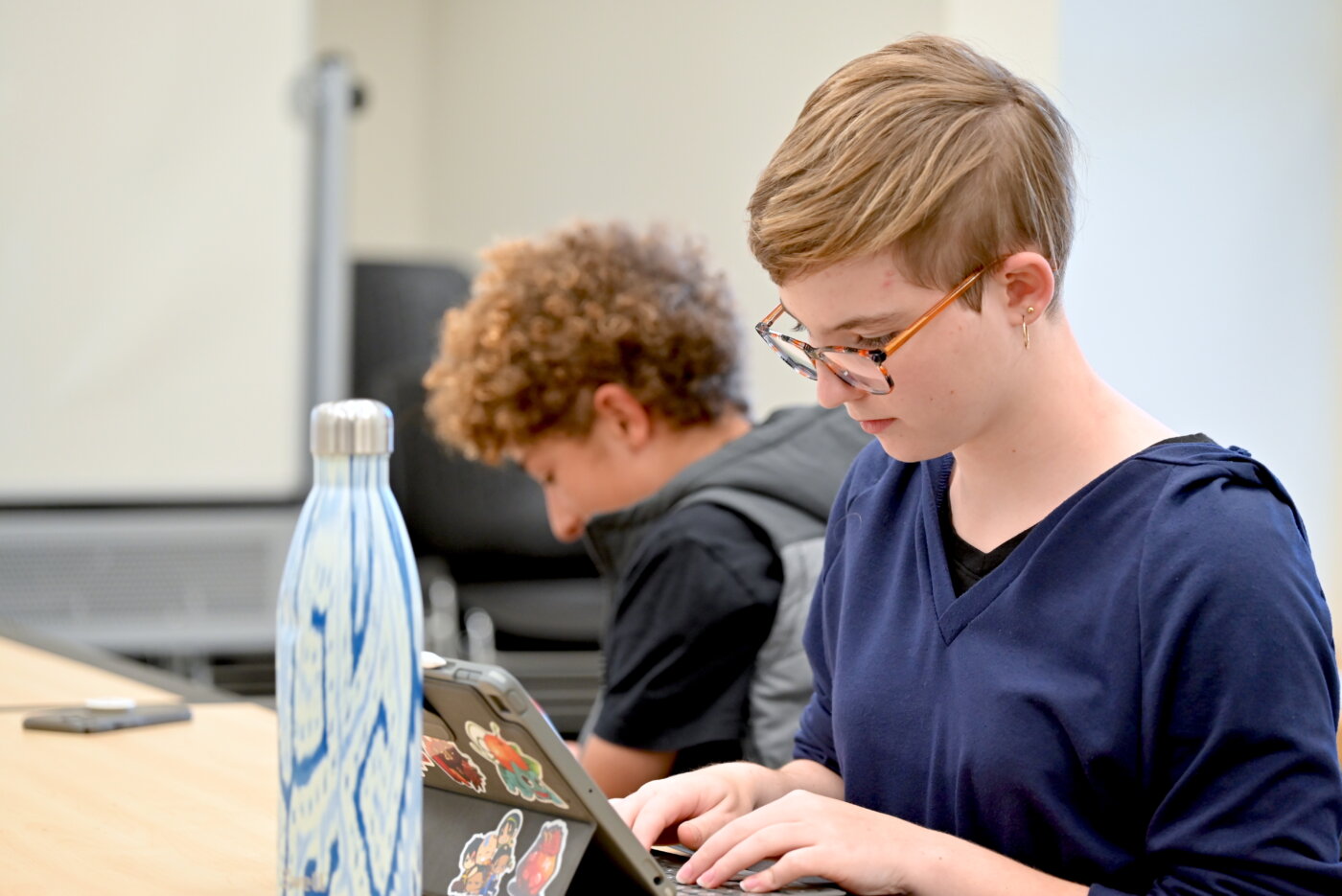
Usually a fan of fantasy or sci-fi genres, Freeman adds, this year they were “too lazy to choose, so I shoved both genres on an island and put a wall made of magic and steel between them, because they were going to war way too much. But they tear down the wall, and I am writing about that process and all the bad things that ensue once the wall comes down.”
Also a repeat participant, Ninth Grader Rosie Risch acknowledges that she’s never finished a novel, but argues, “I think it’s less about actually reaching 50,000 than about having fun and exploring during the process. You get to be with a really great group of people, and have a fun little commitment to look forward to during the month of November.”
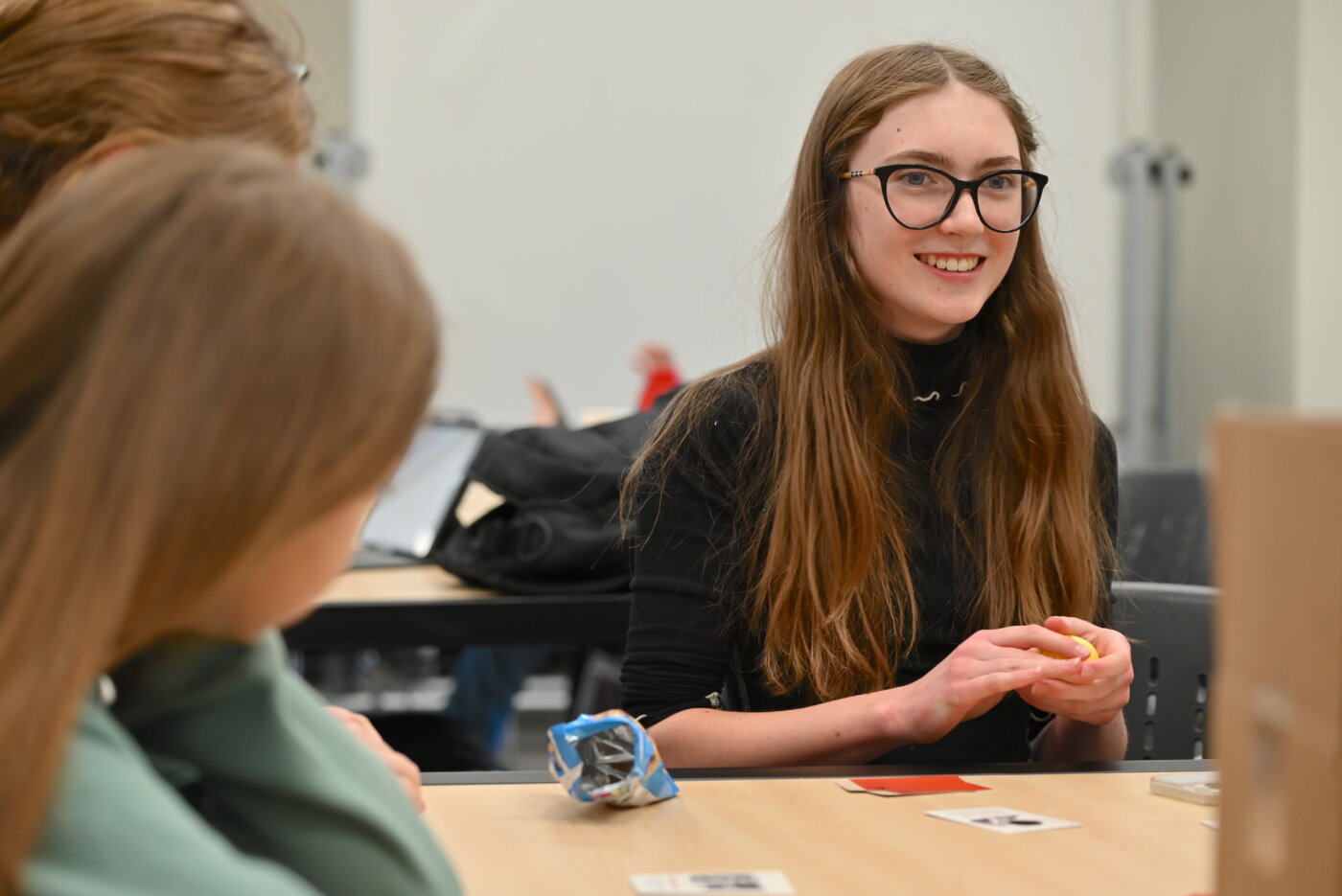
Eighth Grader Alegría Monterroso has written several thousand words of her book, a fantasy in which a school is taken over by scientists, and the students turn into fairies with supernatural powers. “It’s based on a dream I had,” she explains.
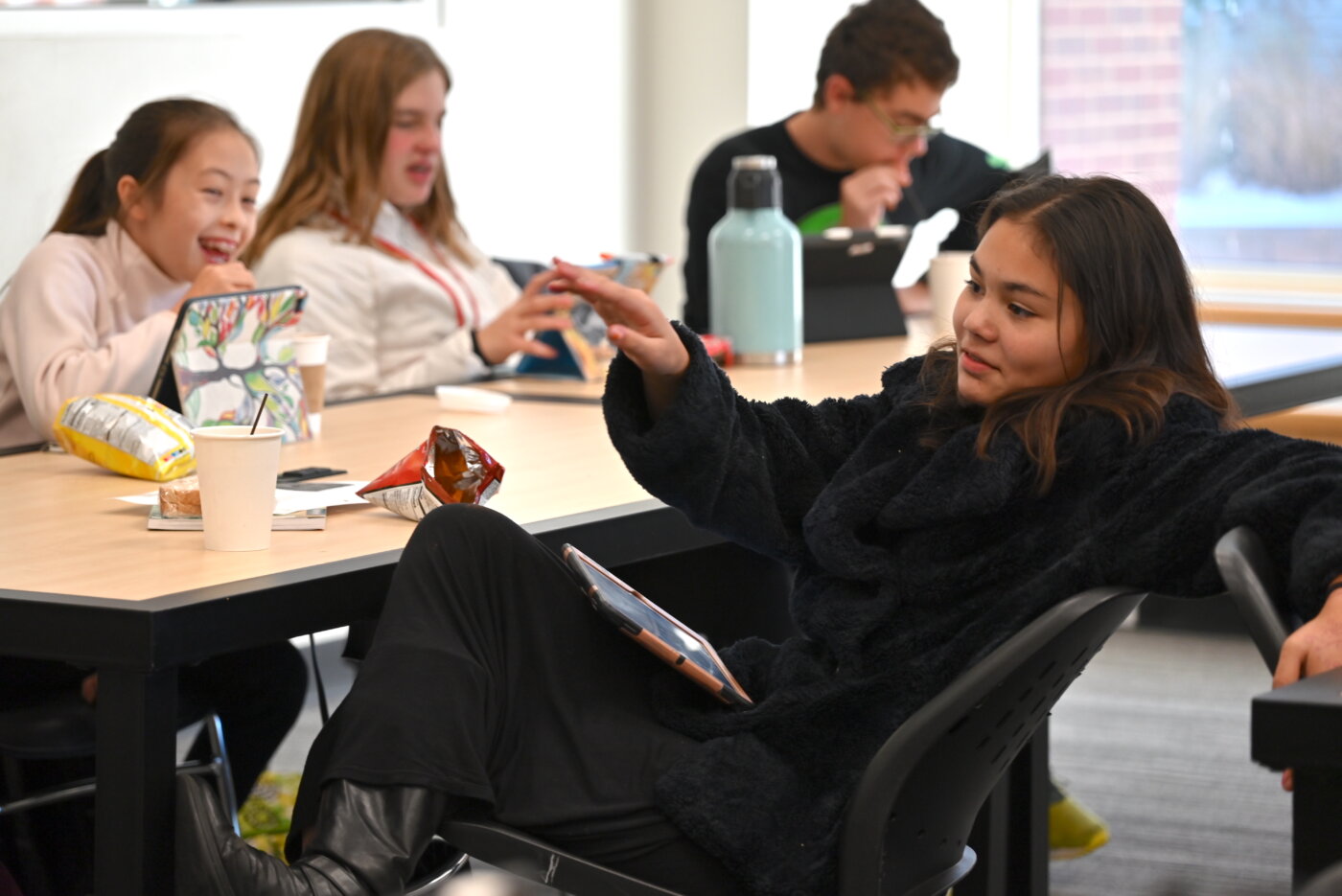
But for Seventh Grader Lorelei Abar, it’s still early going. “All I know is I’m writing about a pack of wolves,” she says.
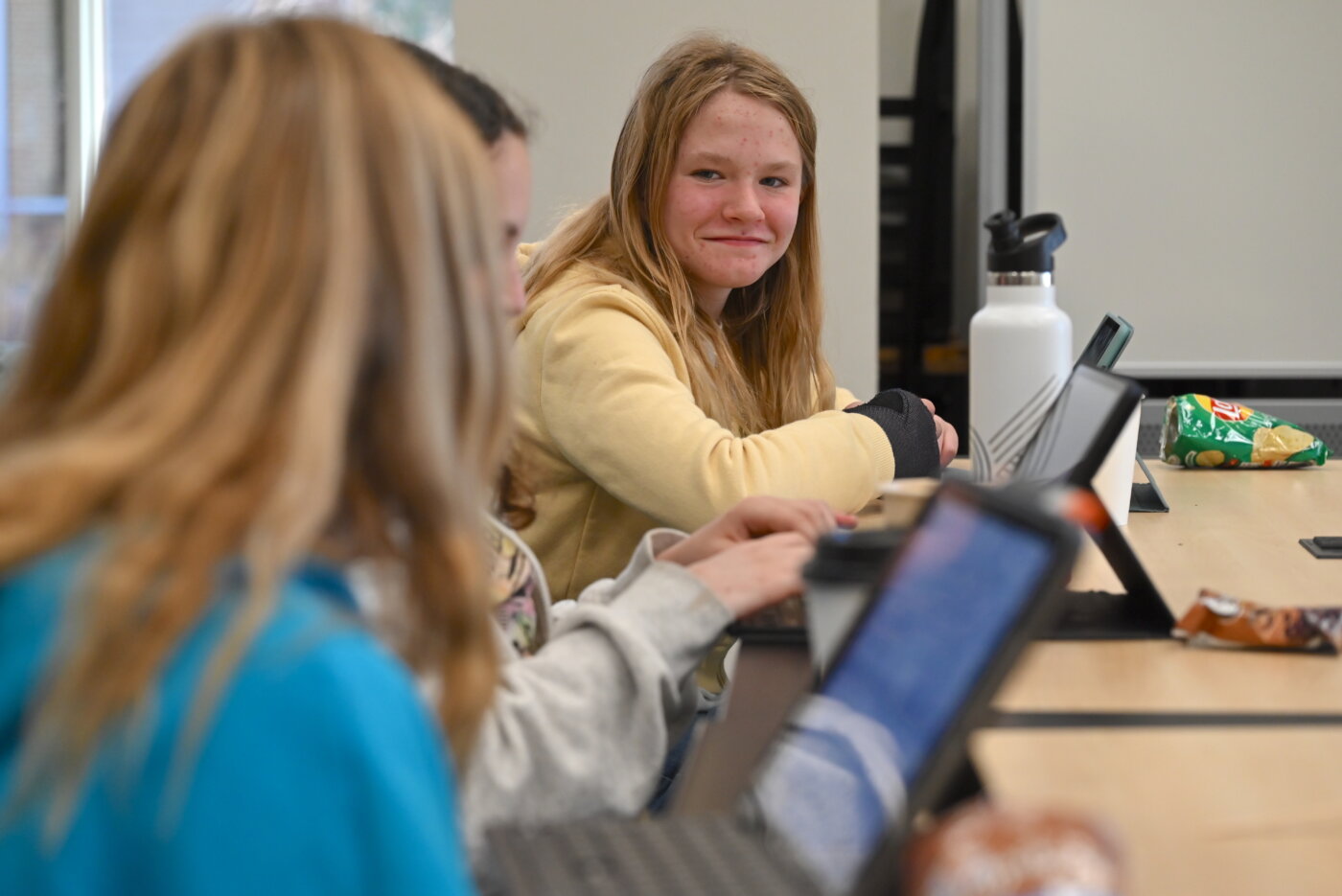
For Senior Olivia Marx, on the other hand, NaNoWriMo is an opportunity to flesh out a compelling and very complete story outline. Her mystery novel is about two college roommates who decide to go on a long-planned backpacking trip to Peru. “The catalyst for them going is that one of the roommates goes through this terrible breakup, and they’re trying to get away,” Marx recounts.

The first half of the book details the women’s trip and the people that they meet along the way. The turning point comes when one of the roommates ends up going missing in the middle of the night. “The other woman freaks out, realizing she’s all alone in Peru. She spends the second half of the novel trying to figure out what happened by retracing their steps and talking to all the people they met along their journey.”
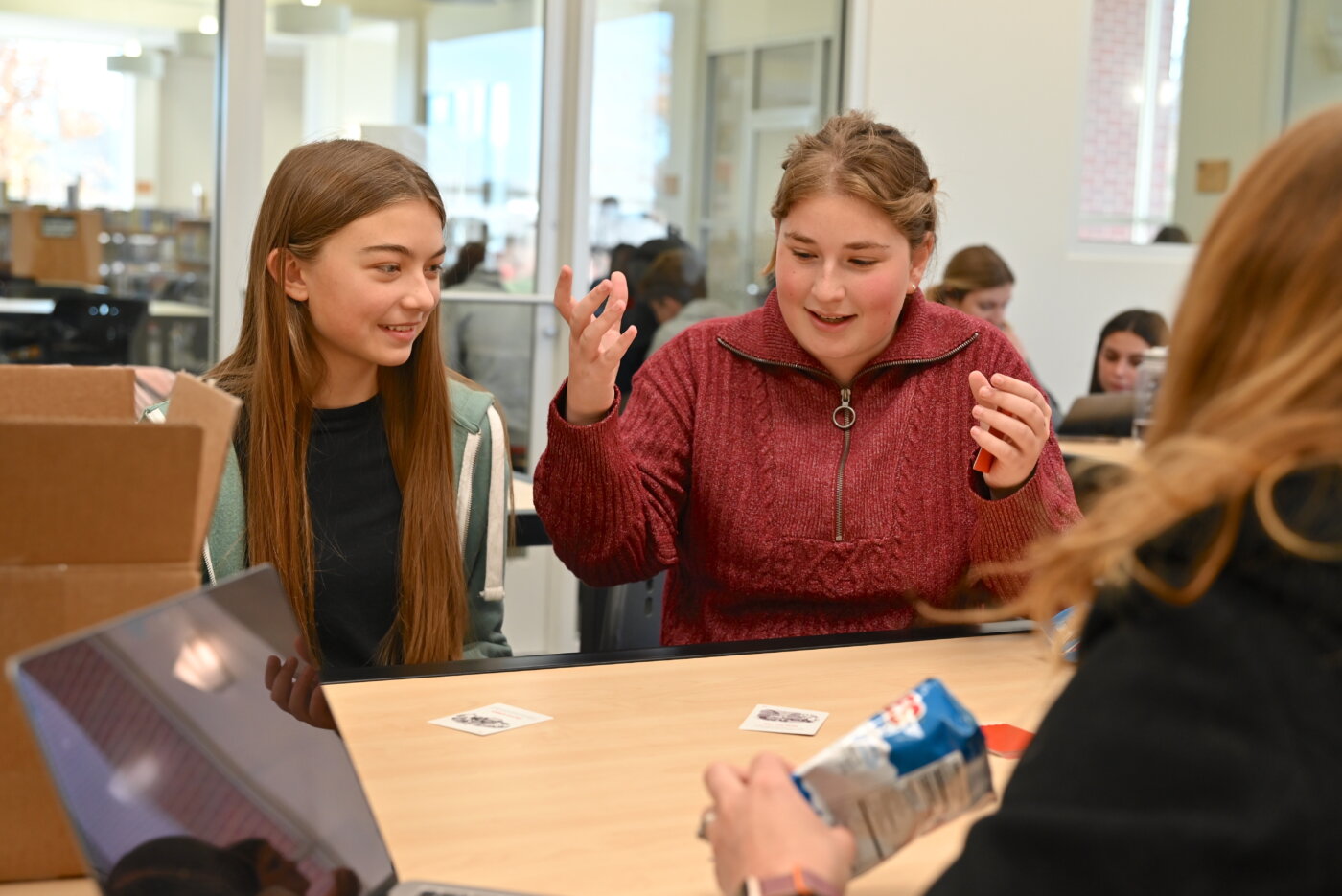
Junior Alex Green, a veteran writer who previously completed a 40,000-word novel, sums up what may be NaNoWriMo’s appeal for many of the participants.
“I like seeing my writing come together like pieces in a puzzle. Reading what I write, reading what my friends write, and talking about our progress motivate me to keep going.”
A success story
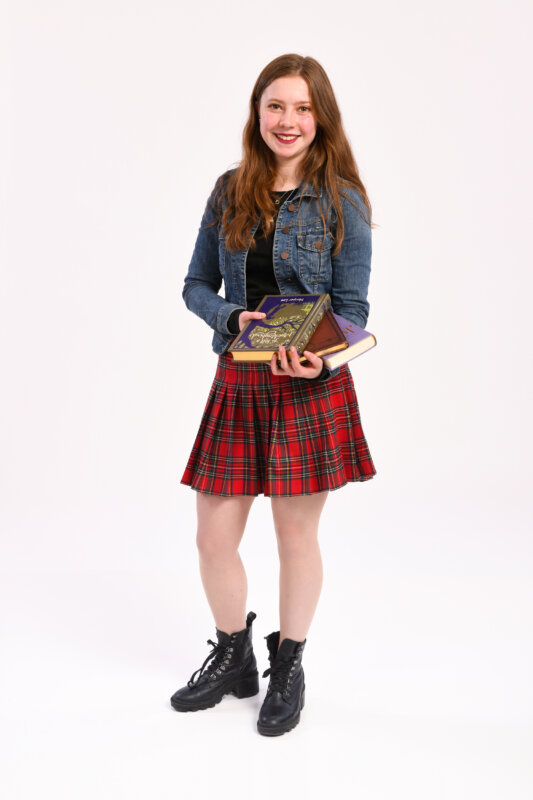
Jordan Davidson ’21, a Yale University sophomore combining the history of witchcraft and applied physics for a remarkable double major, has had her speculative fiction and poetry published in numerous online magazines, and received a YoungArts Award for Excellence in Writing for a novel and poetry she created while at CA. An editor for Yale’s Cortex Collective undergraduate literary magazine, as well as Cathartic Youth Literary Magazine, Jordan says participating in NaNoWriMo throughout her Upper School years helped her discover both a passion for writing and a supportive creative community.
“I really loved creative writing at CA, particularly because of all the different people who came together to make it accessible for lots of different students,” she says. In her first year in the NaNoWriMo club as a “terrified” Ninth Grader, she recalls, “The library staff and the older students who led the culture of the program made me feel instantly welcomed, and like my creative voice mattered.”
Later, when she came back to the club in her Sophomore and Junior years, Davidson in turn mentored younger writers, helping to grow a network that remains strong. “Even two years out of CA, I still have people asking me about next steps for publication.”
Davidson credits the Upper School English Department for further nurturing her creativity during her Senior year. As an auditing student in English teacher Emily Pérez’s Fiction Writing class, she says, not only did Pérez welcome her participation, but she also “read and gave feedback on every draft of this horribly long, complicated, multi-perspective headache of a story that I wrote.”
“I can’t begin to express the immense amount of gratitude I have for the people who supported my writing at CA,” she says. “They are awesome human beings, and they are the main reason I’m at Yale.”
Bringing back the fun
By late November, many of the NaNoWriMo writers are deep into their novels. Some use their club time to add detail to key moments, while others consult friends about the best way to resolve a tricky subplot, or Google replacement names for important characters. Marzonie frequently breaks out a pack of creativity cards that offer tips for writers who are feeling stuck. The suggestions urge creators to “magnify the moment” by focusing on critical details, “start the clock” with a plot-driven deadline, or even switch genres mid-story.
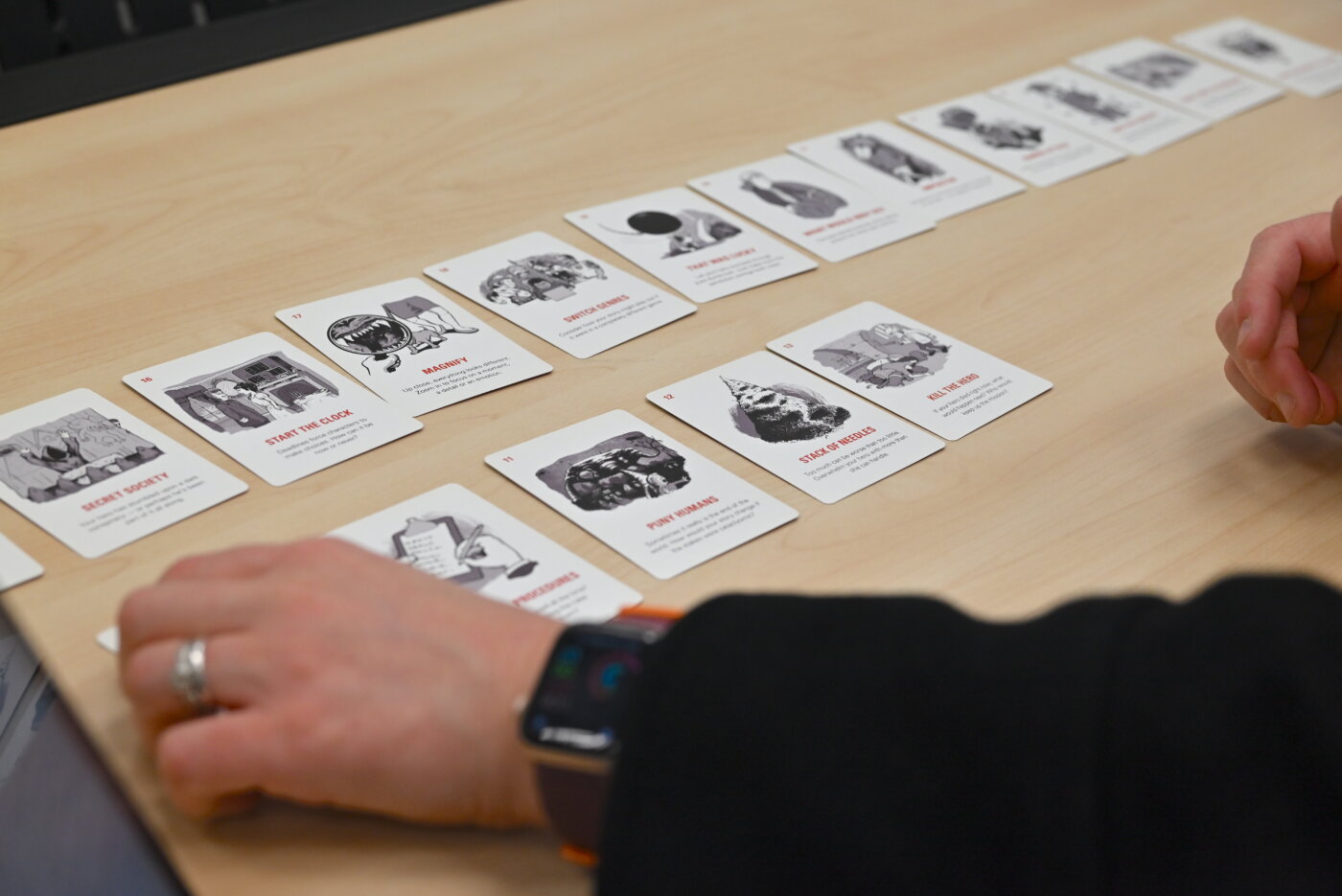
As students mix yet more cups of hot chocolate to fuel their push toward the finish line during the club’s final meetings, the leaderboard in the North Classroom shows that they have written tens of thousands of words. The sense of pride and accomplishment is palpable, and the writers, prompted by Marzonie, take a moment to reflect on their NaNoWriMo experience and celebrate their accomplishments.
“I’ve really enjoyed writing, and I’m going to keep working on it,” says Senior Tylar Dillon, a first-time participant who is partway through her murder-mystery.
Lila Paton, another Senior first-timer, explains that her favorite part of the writing process was introducing her main character’s future husband. “I think I captured his demeanor well, and I was able to include a lot of descriptive detail.”
Sixth Grader Elizabeth Goodwin bravely volunteers to read aloud the opening to her romance novel. “He was looking at me from across the room,” she narrates, “and I felt butterflies in my stomach. I knew that I liked him, but I couldn’t figure out how to tell him. He was the cutest boy I had ever seen.”
Cheers of appreciation from Goodwin’s fellow Middle School authors fill the room.
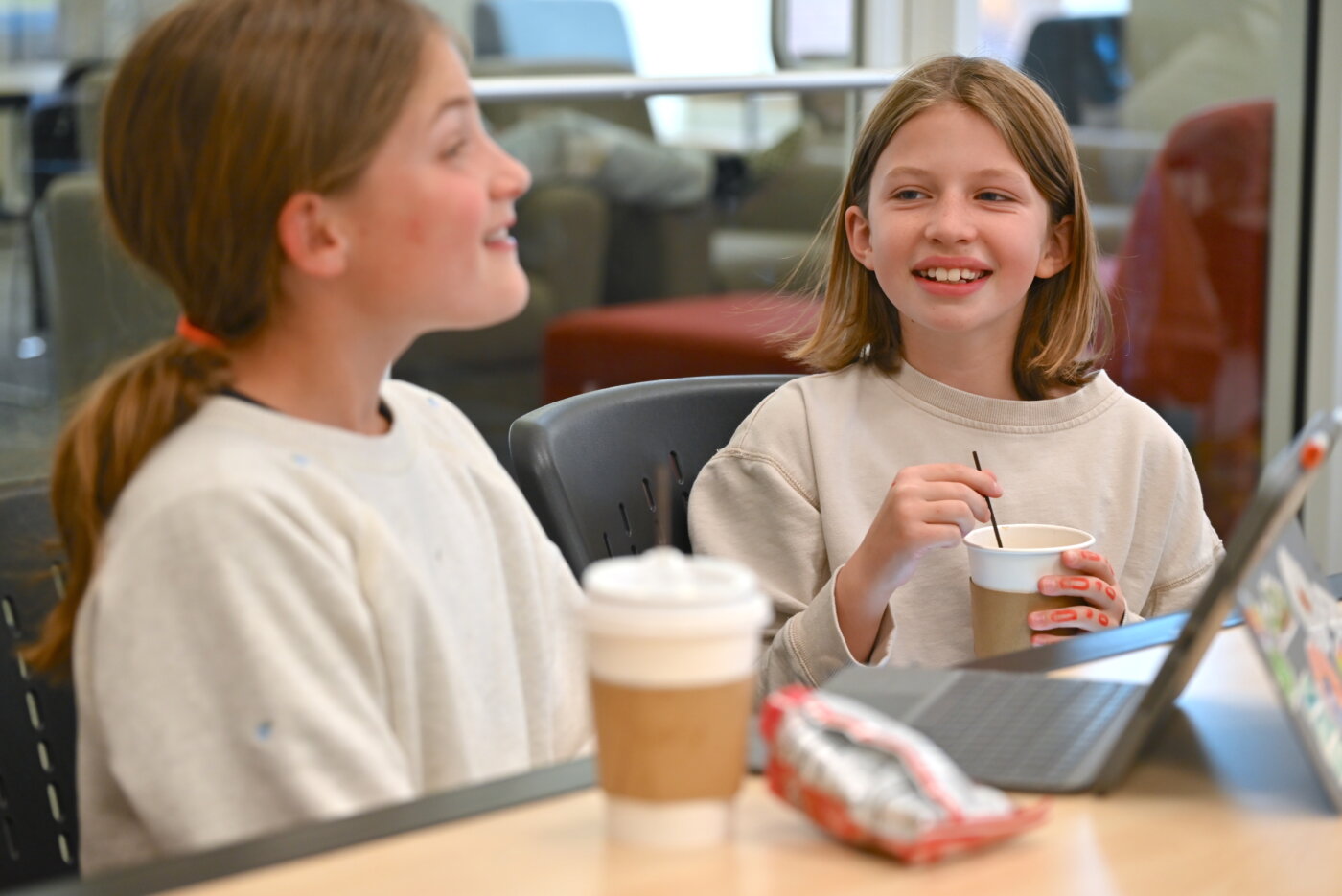
Siena Smith and Arianna Sung, Sixth Grade writing partners who passed the 10,000-word mark in their joint effort, also want to share a taste of their work, told from the perspective of a student. “Every time I see her I want to smack her head with a chicken bone,” their narrator confesses. “Why a chicken bone? I’m not sure—I guess I don’t like chickens that much.”
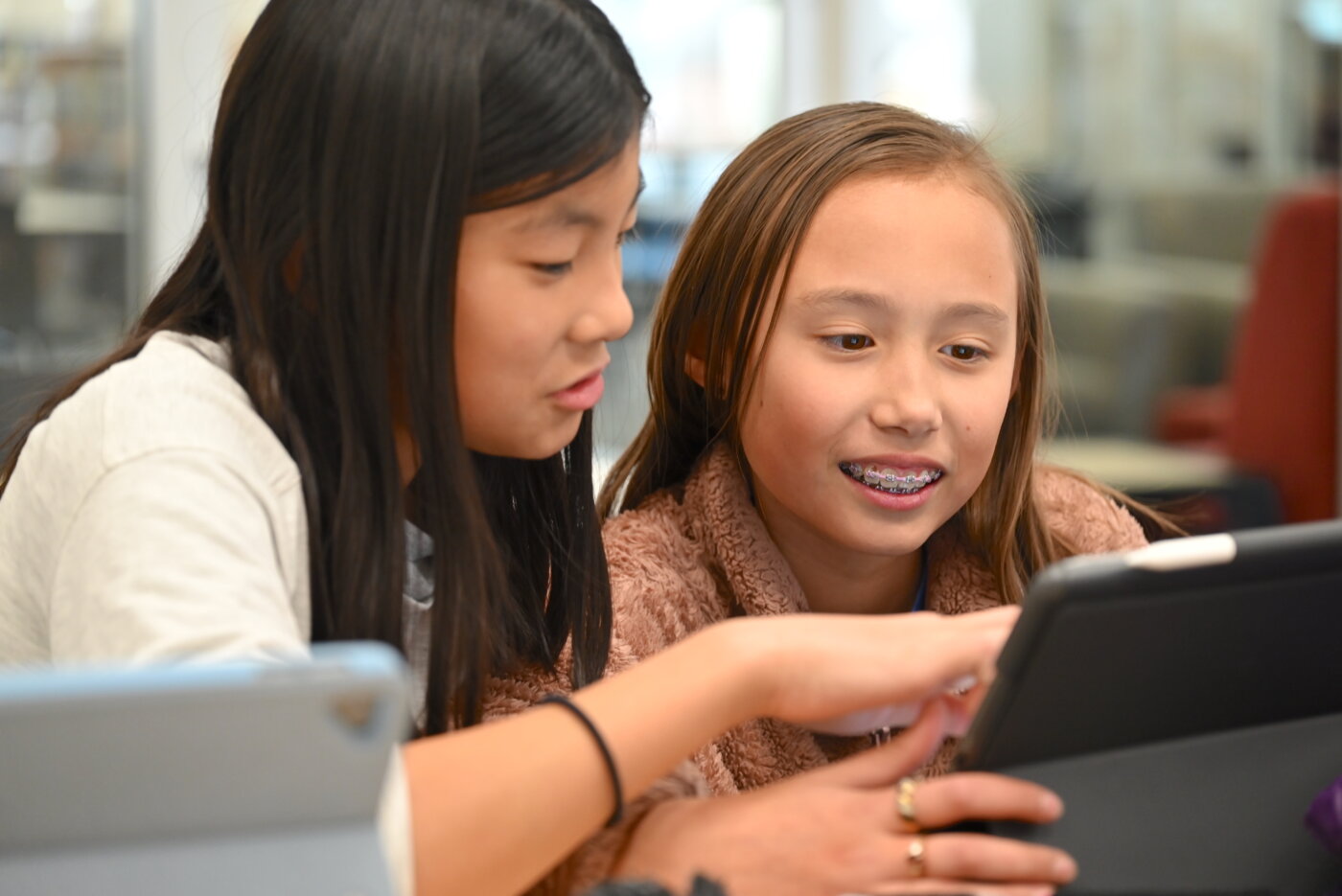
Marx, recounting the progress she has made on her mystery set in Peru, acknowledges, “There have been a lot of times I wanted to start over and try a different idea, but I realized that switching up the perspective with a different narrator, and telling the story in a more non-linear way, make it a lot more interesting. I think it will work out well.”
Alex Kennedy, the Seventh Grader who’s been working on a piece of historical fiction told from the perspective of a rabbit, reveals that mystery, horror, sci-fi, and romance genres have also crept into her writing, and shares a suspenseful passage describing a scary classroom scene. “The lights flickered and went dark. The school was old, so this was to be expected. We continued class for five more minutes, until we heard the static of the loudspeaker. Our principal’s voice sounded frantic, with panic seeping through his words. Then, a hand pressed against the glass of the classroom door and slid eerily down. A silence that made my ears ring filled the room.”

Green decided to scrap an initial novel idea—“a typical romance”—after 14,000 words, but was ecstatic to find a way to combine the partially completed story with a second concept, around which Green quickly produced another 13,000 words. “If I can really cram in the next few days,” Green explains, “I can have 27,000 words by the end of the month.” The new, combined novel tells the story of a student who, though he is failing English, is recruited to participate in a poetry slam, and discovers he has a talent for writing. “My favorite part is that I get to write the poems,” says Green, “and I normally hate writing poetry. So now I’m challenging myself to see how much poetry I can write.”
All kinds of rewards
Toward the end of the final Upper School club meeting, Junior Hailey Krueger gets a round of applause when she reveals that while participating in NaNoWriMo, she applied for and won an internship with The Teen Magazine, an online publication that features student writing on topics such as wellness, student life, academics, lifestyle, and relationships. With more than 20,000 words written for her mystery novel set in the 1920s, she says, “I’m proud of how much better I’ve gotten at showing, not telling. I’ve been using more description and foreshadowing in my writing, which is something I never used to do.”
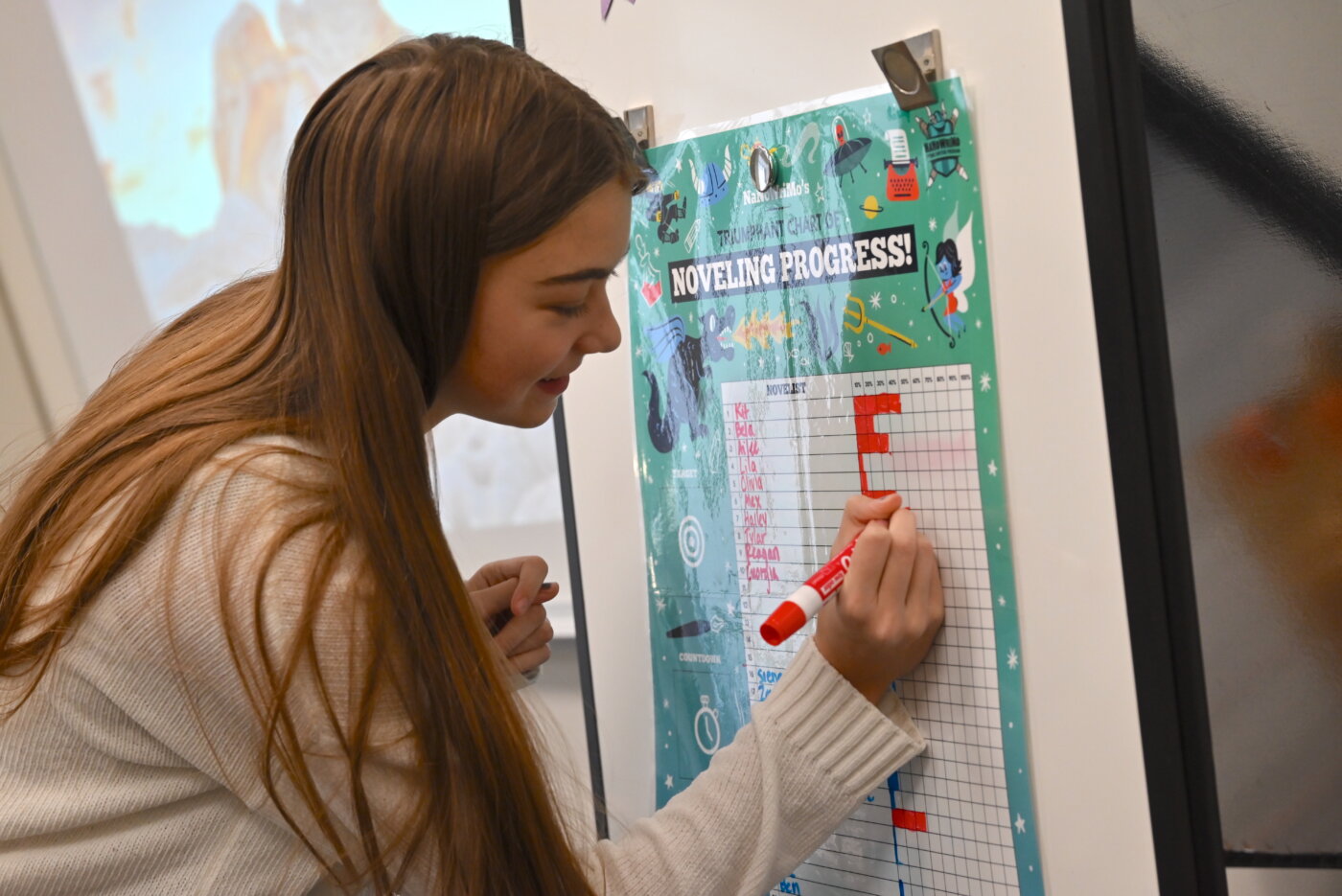
Freeman, too, takes a bow as they close in on completing their novel, surpassing the 45,000-word mark in their story about a genre war between fantasy and sci-fi.
“Last year, only making it to 20,000 words, was a really rough year,” they admit. “Writing, for me, is an emotional experience, so finding enough emotional stability this year to consistently create for long periods of time and meet the challenge has been awesome. At this point, if I don’t finish, I’m going to be severely disappointed; I’ll be aggressively typing to reach 50,000 words.”
For Marzonie, the rewards are more intangible. “Just seeing these kids get excited about writing is so great,” she says. Once a prolific writer of journal entries and blog posts herself, Marzonie says that “bringing back the fun” of writing is important.
“I know a lot of students struggle with writing growing up, and it may not be easy for them in school. But everyone can enjoy stories and feel confident in their abilities. I hope the unstructured, collaborative nature of CA’s NaNoWriMo club helps with that. For Middle Schoolers and even Upper Schoolers who participate just to work on their writing, this experience can take the edge off the next time they have to create something big, make it less scary. Maybe they’ll even find it fun.”
